2014 MINI Cooper Hardtop Vs 2014 Ford Fiesta 1.0L EcoBoost

Would you buy a car with a three-cylinder engine? Believe it or not, the North American three-cylinder revolution has begun.
Well, sort of… You can get the Ford Fiesta with a three-cylinder in any trim level you want as long as it’s the mid-level SE model with a manual transmission and virtually no options. Otherwise, it’s back to the same old four-cylinder as before.
MINI, on the other hand, is going all in by offering a turbocharged three-cylinder as the only engine in the Cooper Hardtop.
So which company has it right? Are turbocharged three-cylinders really good enough to replace four-cylinders as the engine of choice or is Ford being smart in treating its smallest engine as a niche product for customers who put high mileage above all else?
Get the Flash Player to see this player.
Two Ideas About How to Sell Three Cylinders
In the MINI you get a 1.5-liter turbocharged three that makes 134 hp and 162 lb-ft of torque. There’s also an overboost function that temporarily increases torque to 170 lb-ft.
That engine can be paired up to a six-speed manual or automatic; the choice is yours. The manual model is officially rated for 30 mpg in the city, 42 mpg on the highway and averages 34 mpg combined.
Pricing comes in at $20,745 for a base model, while our generously equipped tester comes to $25,695.
Starting this year, Ford will sell you a version of the Fiesta with a tiny 1.0-liter turbocharged three-cylinder engine. It’s also sold exclusively with an old-school five-speed manual transmission.
The little powerplant is offered as a $1,000 extra-cost option on the SE trim level making 123 hp and 148 lb-ft of torque. For the extra money, Ford says you should notice a considerable fuel savings with 31 mpg in the city, 43 on the highway and 36 overall. Those ratings reflect Ford’s recently reduced rating.
Available in both sedan and hatch forms; the hatchback carries a starting price of $17,900 while the sedan is $400 cheaper. Ford doesn’t offer very many options with this model, but fully loaded the car costs $19,080.
Panache vs Plain
The MINI Cooper enters a new generation for the 2014 model year growing 4.5 inches in length and almost two inches in width although that size increase is hard to notice without the old car beside it. Standard equipment inclues 16-inch alloy wheels although it’s possible to outfit the car with 17- or even 18-inch rims if you choose.
The Fiesta is also revised for 2014. Aside from the new engine, it received cosmetic updates that are move obvious than styling changes made to the MINI.
Despite having invested heavily in developing the 1.0-liter EcoBoost, Ford is being pretty stingy with where it will initially offer the engine to American customers.
You can only get it with the SE trim equipped with 15-inch steel wheels and hubcaps. In fact, the only differentiating characteristic to the 1.0-liter model is the EcoBoost badge on the rear. Otherwise, it’s the same Fiesta with Ford’s new corporate face on both sedan and hatchback models.
Small Cabins, Big Differences
The MINI is expensive for a subcompact, but you can see the point of paying the premium as soon as you step into the car.
With premium materials throughout the cabin, it’s one of the most attractive choices in the segment.
Unlike past MINI products, the big speedo in the center stack is gone, replaced by glowing ring that reacts to what you’re doing in the car. For example, a light travels around the outside like a tachometer if you rev the engine while climate control settings are reflected by blue and red lights that are shown proportionately around the edge like a temperature dial.
The MINI can come with several upscale features. There’s a huge panoramic sunroof, dual-zone automatic climate control and heated seats. If that’s not enough, you can get a heads-up display, parking sensors and even an active parking assist system. Unfortunately, the Fiesta doesn’t offer nearly as much optional equipment.
Just like the outside, picking the 1.0-liter EcoBoost Fiesta means living with a no-frills option list. Things like navigation and a rear-view camera are off limits, although you can specify heated front seats and you can still get a 200-watt subwoofer from the factory for about $600.
Other than that, it’s a barebones interior with cloth seats, a basic stereo head unit and really very little to talk about. In fact it seems sort of strange that Ford would deny people the privilege of paying for optional equipment when they’re already spending more for a special engine.
After all, the Titanium trimmed Focus actually starts to creep up on the Cooper in terms of price.
For example, the more expensive Fiesta can come with alloy wheels, leather seats, and a touchscreen navigation system. It’s still not as well equipped as the Cooper, but at least you wouldn’t be left with something that feels a little bit like a rental car.
Compare Specs
| Vehicle | 2014 Ford Fiesta SE 1.0-liter EcoBoost | Advantage | 2014 MINI Cooper Hardtop |
|---|---|---|---|
| Engine size | 1.0-liter | - | 1.5-liter |
| Transmission | five-speed manual | MINI | six speed manaul or auto |
| Horsepower | 123 hp | MINI | 134 hp |
| Torque | 148 lb.-ft | MINI | 162 lb.-ft |
| Average MPGs | 36 | Ford | 34 |
| Base price | $17,900 | Ford | $20,745 |
| As tested price | $18,290 | Ford | $25,695 |
Tiny Engines That Don’t Feel So Small
The MINI formula is still intact and still equates to a fun-to-drive car. The steering feels precise and is further enhanced if you spring for the optional adjustable dampers that alter how the car handles. Flip it into sport mode, for example, and it feels much livelier while cornering.
Power hits its peak at 4,500 RPM and continues until 6,000 rpm. However it’s the torque that steals the show here with all 162 lb-ft coming on just above idle at 1,250 RPM.
The sprint to 60 mph takes 7.4 seconds in this model and while you won’t go shooting around a car you’re trying to pass, the car doesn’t feel usually underpowered either. And if it ever does, you’re only a downshift away from having plenty to get going. Speaking of shifts, the MINI’s manual is a fantastic gearbox. Shifts are easy to manage and feel precise with no second-guessing before you push and pull the stick from gate to gate.
Noises and vibrations are surprisingly minimal in the MINI even though it uses a boosted three-banger. Surprisingly, the Fiesta isn’t terrible either.
In fact from a driveability perspective, it’s fantastic. For such a tiny engine, it’s shocking how much torque there is. It’s not going to put you in the back of your seat, but also doesn’t feel at all pathetic the way its size would suggest.
What’s more, this is an especially forgiving car to drive. Smooth starts and shifts come naturally and I admit the stick feels a little bit sloppy, but what do you expect in a low price sub-compact?
Now that’s all well and good, but you will notice vibration working its way into the cabin at higher RPM, which happens frequently because of how small the engine is.
And while you’re up in those higher reaches, the little three pot is also pretty noisy.
But that’s only the case under hard acceleration. Once you settle on a speed during highway cruising, the Fiesta is actually pretty quiet considering what it is.
The Verdict:
It’s a shame that Ford isn’t making the 1.0-liter EcoBoost its base engine in the Fiesta by default. What you give up in refinement, you more than gain back in fuel economy without being penalized with poor performance.
MINI’s three-cylinder execution only stands to further emphasize that. Not only does it offer enough power, but it’s actually a lot of fun to drive, which his why we’re giving MINI the win.
2014 MINI Cooper Hardtop, 2014 Ford Fiesta SE 1.0-liter EcoBoost
LOVE IT
- Fun to drive
- Sounds good
- Premium interior
- No equipment restrictions on 3 cylinder engine
- Surprisingly powerful for engine size
- Efficient
LEAVE IT
- Expensive for a sub-compact
- Restrictive trim package
- Steel wheels only

Luke is an energetic automotive journalist who spends his time covering industry news and crawling the internet for the latest breaking story. When he isn't in the office, Luke can be found obsessively browsing used car listings, drinking scotch at his favorite bar and dreaming of what to drive next, though the list grows a lot faster than his bank account. He's always on <A title="@lukevandezande on Twitter" href="http://twitter.com/lukevandezande">Twitter</A> looking for a good car conversation. Find Luke on <A title="@lukevandezande on Twitter" href="http://twitter.com/lukevandezande">Twitter</A> and <A title="Luke on Google+" href="http://plus.google.com/112531385961538774338?rel=author">Google+</A>.
More by Luke Vandezande
















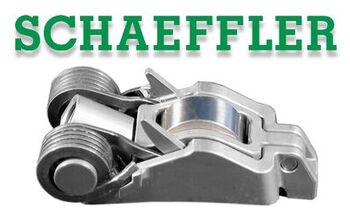



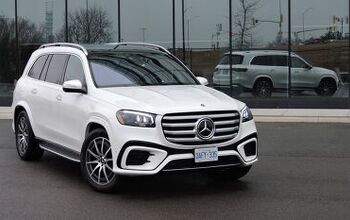


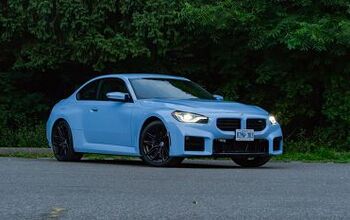

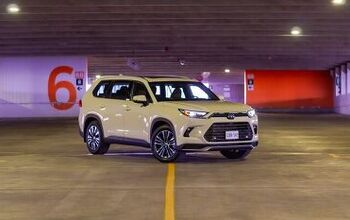

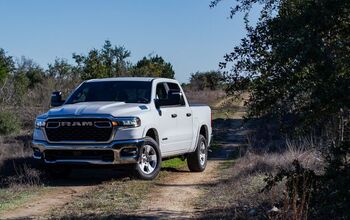


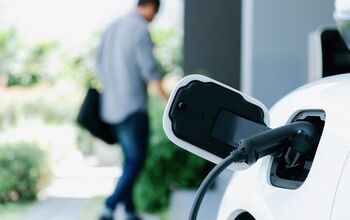
Comments
Join the conversation